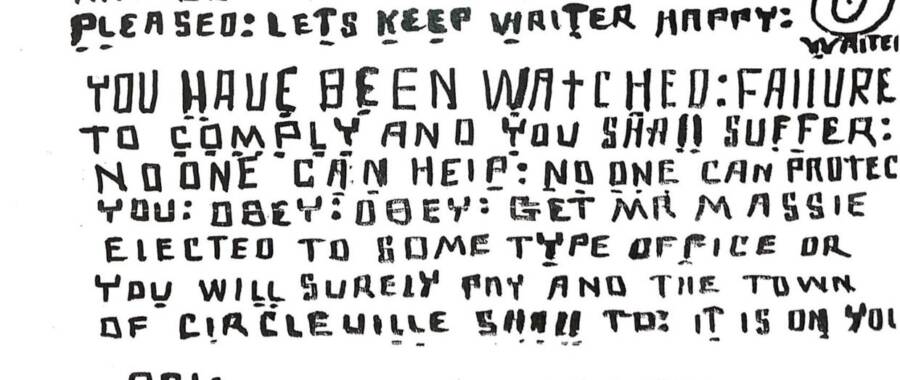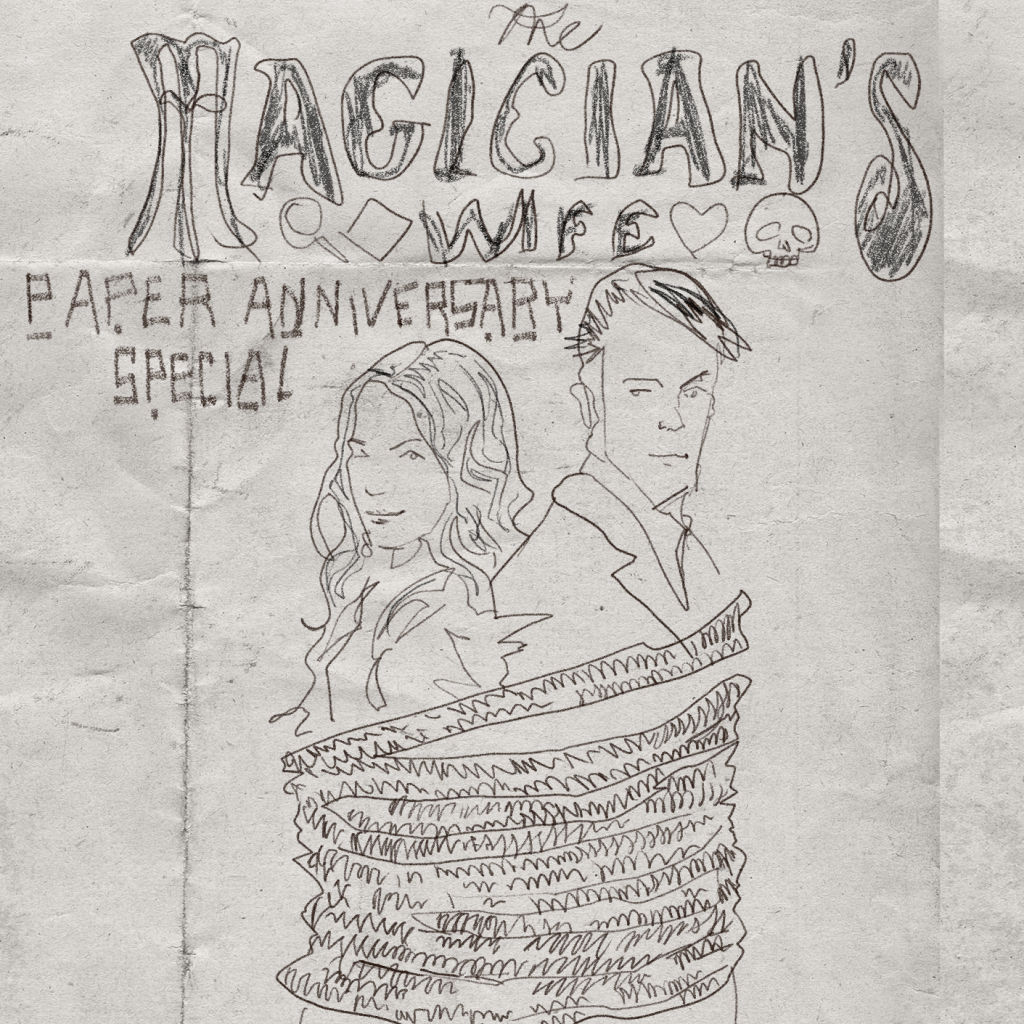The Effect
In 1976, the quiet, all-American town of Circleville, Ohio, became the victim of a poison pen. Anonymous letters, written in a distinctive, blocky script, began appearing in mailboxes. They were filled with accusations, secrets, and threats, targeting one person in particular: Mary Gillespie, a local school bus driver. The letters accused Mary of having an affair with the school superintendent. At first, they were a private torment, but soon, they became a public spectacle.
The writer, whose identity was a complete mystery, seemed to be everywhere. The letters were not only mailed to Mary and her husband, Ron, but also to their relatives, neighbours, and colleagues. The writer’s knowledge was unnervingly intimate, detailing schedules and private matters. The harassment escalated when crudely written signs bearing the accusations were staked along Mary’s bus route, ensuring the entire community, including the children on her bus, knew of the scandal. Fear and suspicion sped through the town. Who was this person, who seemed to know everyone’s business, and took such cruel delight in destroying a woman’s reputation?
In August 1977, the campaign of hate became far more sinister, turning deadly. Ron Gillespie received a phone call. The content of the call is unknown, but it caused Ron to storm from his house in a rage, jump into his pickup truck, and speed off. A short time later, his truck was found smashed up, the bonnet buckled around a tree. Ron was dead. The authorities ruled it an accident, concluding he had been drinking and had fired his pistol, which was found at the scene, before the crash. But chillingly, the town’s mysterious letter writer quickly claimed credit for the fatality, sending a new letter that read: “Gillespie’s had it, he’s been sleeping too good.”
The letters continued, now targeting Mary with even greater venom. Then, in 1983, Mary was driving her bus route when she saw another derogatory sign. She went to remove it, only to find it was a booby trapped. Attached to this sign was a box, inside which a pistol was rigged to fire when the sign was moved. Incredibly, the gun had failed to discharge. Police traced the weapon to Mary’s own brother-in-law, Paul Freshour. Despite having an alibi and protesting his innocence, a handwriting analysis was deemed a match, and Freshour was convicted of attempted murder. The town breathed a collective sigh of relief. The Circleville Writer with a poisoned pen was finally behind bars. But the relief was short-lived. While Paul Freshour sat in solitary confinement, the letters started appearing… again.
The Method
The conviction of Paul Freshour should have been the end of the story, but it only deepened the mystery of the venomous Circleville Letters. With Freshour in prison, how were new letters, written in the same distinctive block print, being postmarked from Columbus, near the prison in which Freshour was incarcerated, and arriving in Circleville? This central paradox has led to several theories about the true identity of the Circleville Writer.
Theory 1: Paul Freshour was the writer, but he had an accomplice.
This theory maintains that the original conviction was correct, but that Freshour was not working alone. When he was imprisoned, an accomplice on the outside simply continued his campaign of terror. This would explain the continuation of the letters. However, no accomplice was ever identified, and Freshour himself never implicated anyone else, maintaining his innocence until his death. Another possibility is that he was smuggling the letters out of the prison, but investigations into this possibility have proved inconclusive.
Theory 2: The writer was Ron Gillespie’s sister, Karen Sue Gillespie.
This is one of the most compelling theories. Karen Sue was Paul Freshour’s wife at the time. The theory suggests that it was actually Karen who was having an affair with the school superintendent. To deflect suspicion from herself, she created the character of the Circleville Writer and aimed the accusations at her sister-in-law, Mary. This would explain the intimate knowledge the writer possessed. Could Karen have allowed her own husband, Paul, to be framed for a crime she committed, either to silence him or simply in sacrificing him as a casualty of her deception? With Paul in prison, she would have been free to continue writing the letters herself, explaining their persistence.
Theory 3: An unknown third party was the owner of the poisoned pen.
Circleville was a small town, but full of complex relationships. The writer could have been someone else entirely, with a hidden grudge against Mary Gillespie or the school superintendent. Perhaps the perpetrator was another school employee, a spurned lover of the superintendent, or a disgruntled parent. But this person would have had to know Mary’s routine and family secrets intimately. This theory posits that Paul Freshour was simply an unfortunate scapegoat, a convenient suspect whose gun was used to set him up, and whose questionable handwriting sample was enough to secure a conviction.
The case remains a haunting local legend. Paul Freshour was released on parole after ten years, still proclaiming his innocence. In 1994, the TV show Unsolved Mysteries covered the case and received one final, disturbing letter from the writer: “I still know what you did… Turn off your show and leave me alone.” To this day, the true identity of the letter writer who terrorised the town of Circleville, and tore a family apart, remains unknown.
© 2025, Lora Jones. All rights reserved. Reproduction prohibited without written permission.




